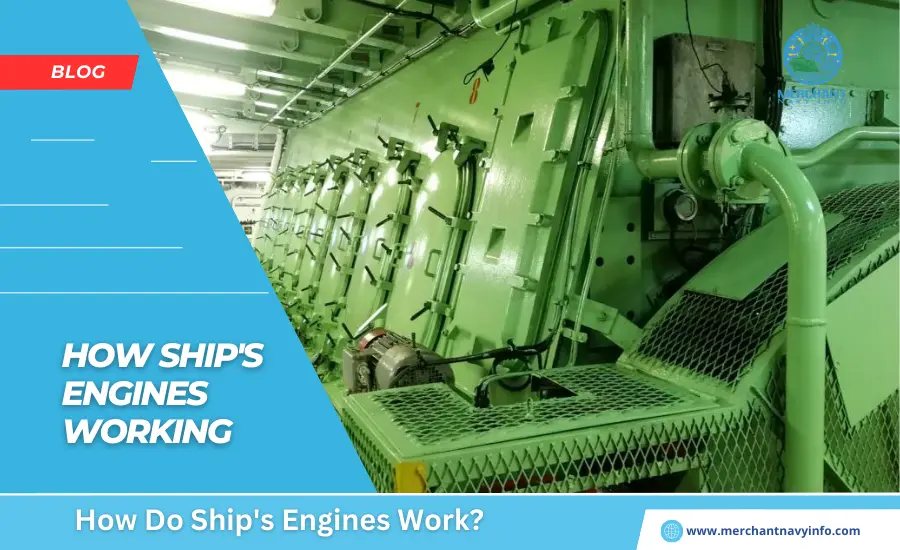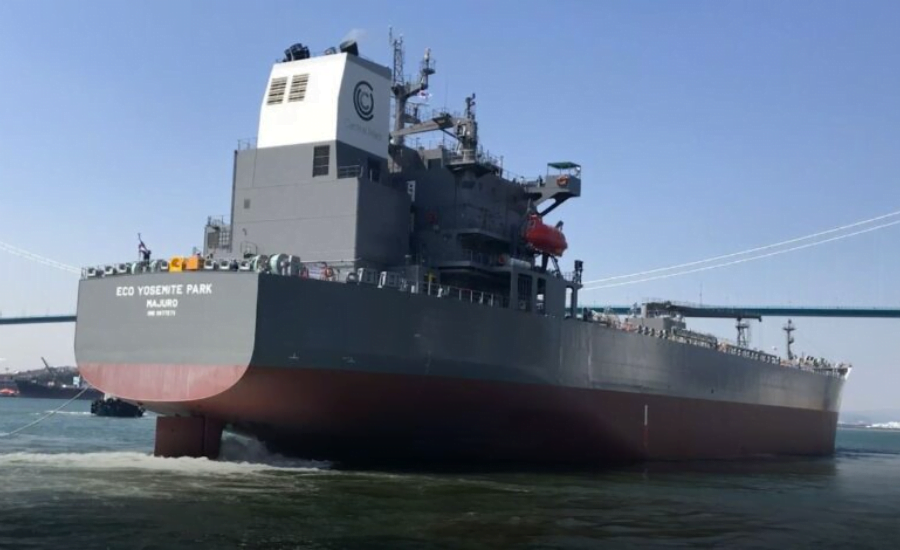
Ship engines are responsible for propelling ships from one port to another. Whether a small ship is sailing in coastal areas or a large ship is sailing in the high seas, they always have four-stroke or two-stroke engines for propulsion.
Ship engines are heat engines that convert the heat generated by the combustion of fuel into useful work. H. They generate thermal energy and convert it into mechanical energy. The engines used in ships are internal combustion engines (type A), in which the combustion of fuel takes place in the engine cylinders, and heat is produced after combustion.
Working Principle of Marine Engines
As already mentioned, internal combustion engines are mainly used for ship propulsion and power generation. How ship engine work can be explained as follows:
- Fuel is injected under high pressure in a controlled amount.
- A piston in the engine cylinder is used to compress the fuel-air mixture, which then explodes under pressure. This releases heat and increases the pressure of the combustion gases.
- The sudden increase in pressure forces the piston downwards, which uses a connecting rod to convert the lateral movement into rotational movement of the crankshaft. The explosions are constantly repeated depending on the type of ship engine and its application to maintain power.
The crankshaft is connected to a generator or propeller assembly through a flywheel to perform mechanical work. Explosions must be constantly repeated to keep the crankshaft rotating continuously.
Before the next explosion, the spent gases are also expelled from the cylinder through the exhaust valve, providing fresh air. This pushes out the spent gases and also provides fresh air for the next combustion process.
Types of Marine Diesel Engines
The two basic types of marine diesel engines are:
- Four-stroke engines
- Two-stroke engines
Four-stroke engines are also used to generate electricity and propel ships (usually small boats). This engine requires four cycles to complete the power transfer from the combustion chamber to the crankshaft.
Events that happen in an internal combustion engine
The steps in an engine are:
- Intake stroke to draw fresh air into the chamber – this is the downward movement of the piston
- Compression stroke to compress the air-fuel mixture – this is the upward movement of the piston
- Power stroke – explosion occurs, pushing the piston downwards
- Exhaust stroke – this is the upward movement of the piston to expel spent gases
Where and How are Marine Engines Made?
If you have ever seen a ship engine, be it a small four-stroke generator engine or also a huge two-stroke propulsion engine, the thought has probably crossed your mind as to where and how these engines are made. The most well-known engine manufacturers for engines used in marine applications are:
- MAN Diesel & Turbo (formerly B&W Engines) – known for high, medium, and low-speed marine engines.
- Wartsila (formerly Sulzer Engines) – known for high, medium, and low-speed marine engines.
- Mitsubishi – manufactures engines for light, medium, and heavy-duty applications.
- Rolls Royce – known for engines for cruise ships and naval vessels.
- Caterpillar – manufacturer of medium and high-speed marine diesel engines Wärtsilä holds the Guinness World Record for the largest ship engine ever made.
Where are Ship Engines Made?
These marine engines are assembled in the manufacturer’s facilities. For example, MAN Diesel has production facilities in Augsburg, Copenhagen, Frederikshavn, Saint-Nazaire and Shanghai. Similarly, Wartsila has facilities in Finland, Germany, China, and other places. Marine engines can also be manufactured at a reputed shipyard if there is an agreement between the two companies. Engines are typically manufactured in three different sections (see below) and also can be installed at the shipyard either in sections or as a complete assembly, depending on the size of the engine room and access for installation.
Materials used in Manufacturing Marine Engines
Materials used in manufacturing marine engines and various marine engine parts are:
Base Plate
The base plate is the lowest part of the engine and also is the base of the engine and housing. Crankshaft bearings and A-frame. For small engines, a single piece of cast iron casting is used, and for larger two-stroke engines, a cast steel section with side members is used.
A-frame
The A-frame, as the name suggests, resembles the shape of the letter “A” and is mounted on the base plate of the engine. It is built separately to support the crosshead guide, and at the top, it supports the base of the entablature. The bottom of the A-frame is machined to create a mating surface for mounting to the Base Plate.
Entablature
The framework also called the cylinder block, is made of cast iron and also is responsible for holding the cooling water and flushing air spaces. Depending on the size of the engine, the casting can accommodate either one cylinder or multiple cylinders (bolted together). The bottom of the cylinder block is machined to create a mating surface and is fixed to the A-frame using mating screws.
Various other marine engine parts that are installed on an engine are: Pistons, liners, cylinders, connecting rods, crankshafts, camshafts, fuel pumps, exhaust valves, etc. These important parts can be explored in detail in our eBook.
Marine Engine Maintenance
Basic maintenance of a marine engine includes routine maintenance that includes overhauling the major moving and also stationary parts of the combustion chamber.
The following are some of the most common maintenance operations performed on marine engines:
- Pistons, rings, and also piston rods.
- Cylinder liners.
- Exhaust valves.
- Stuffing boxes.
- Connecting rod and crosshead bearings.
- Main bearings.
- Crankshaft deflection.
- Fuel pump controls.
- Starting air system.
The intervals between overhaul intervals are specified by the manufacturer in the engine manual. Maintenance must be performed according to the specified period between two overhaul intervals, whether the engine is experiencing problems or not.
In addition to timely overhauls, engine power, and performance should be checked using the digital power display. Inspection of the flushing chambers is also performed to check the condition of the piston rings, which determines the efficiency of the cylinder liner lubrication system.
Marine engines used on ships are one of the most demanding and complex engineering works. Marine engineers are therefore specialized in the operation, maintenance, and also troubleshooting of marine engines on board ships.










